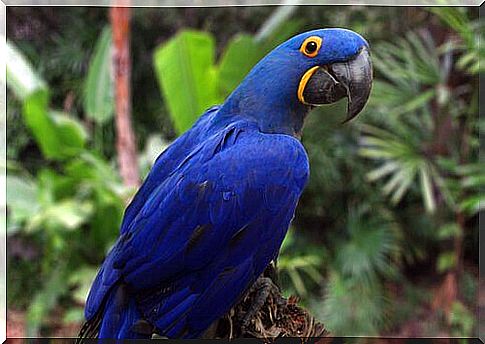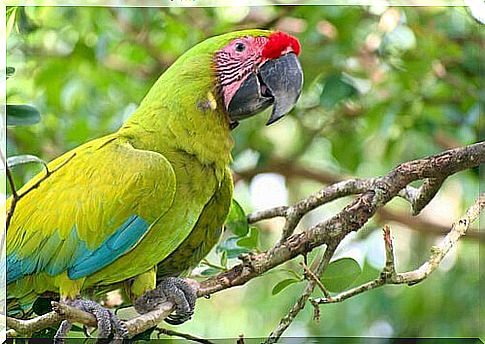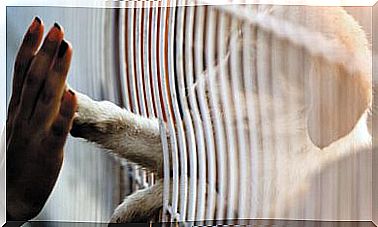Birds Of The Genus Ara

They belong to the same family as the parrots and live in the tropical forests of Latin America. The macaw is known for its brightly colored plumage and its huge curved beak. In today’s article we will tell you about wonderful birds that will leave you speechless.
General characteristics of macaws
The body of this bird is able to live in the tropical forest, not only for their colorful feathers that allow them to blend in with the abundant vegetation, but also thanks to their strong claws that allow them to grasp well to the branches of the trees.
They are very sociable and intelligent birds; they unite in flocks of about 30 specimens and to communicate with each other, they use a very particular language. They can even mimic the human voice.
They sleep in trees at night and forage for food (fruit, insects, nuts, or snails) in the morning. Some species also include dirt or mud in their diet, in order to relax the stomach and neutralize the fruit components.
They are monogamous birds and spend their adult life next to their partner: they look after each other, look for food and always mate with the same mate. When the female lays and hatches the eggs, the male takes care of hunting and supporting the family.
Birds belonging to the genus Ara
In total there are 17 species of birds of the genus Ara; unfortunately many of them are at risk of extinction, due to the destruction of their natural habitat by man, or under constant threat of illegal trade.
-
Ara macao (Scarlet Macaw)
It is the largest bird of the Ara genus (it reaches 90 cm in height and a kilo in weight) and is characterized by its mainly red plumage, with green, blue and yellow wings and tail.
The Macaw – main image of the article – lives in the tropical forests and forests of Central and South America. It is a diurnal bird, very sociable and feeds on fruit and seeds.
-
Ara ararauna (Yellow and blue macaw)
Here is another of the best known macaws. It lives in South America, more precisely in the Amazon basin. It forms groups of various specimens and is characterized by its yellow plumage on the front and turquoise on the outside. It has a white face with some black lines around its very small eyes and dark claws and beak.

They nest every two years by making hollows in the trunks of the trees, and the females lay two or three eggs, then hatching them for 28 days. Three months after birth, the chicks leave the nest.
-
Blue-throated Macaw (Ara golablu)
If you have seen the Rio cartoon, you will surely remember the protagonist, a beautiful Blue-throated Macaw. As its name indicates, its body is entirely blue apart from two yellow markings around its eyes and beak, while its claws and beak are black.

This splendid specimen lives in the Amazonian forests and is the largest of the Macaw family. Just as it says in the film, the Blue-throated Macaw is in danger of extinction due to illegal trade.
As for reproduction, it nests in tree caves and lays at most two eggs: only one of the birds survives. He lives with his parents for up to 3 months and reaches maturity at the age of seven.
-
Ara ambiguus (Green Macaw)
It lives in Central America, more specifically in the humid forests located at a maximum of 1500 meters above sea level, and is another of the birds of this group at risk of extinction.

Its plumage is very showy: the forehead is scarlet red, the back green, the turquoise and green feathers with light blue edges. A real flying rainbow!
It can fly great distances in search of food – its diet is mainly based on the fruits of the mountain almond – and forms flocks of up to 40 specimens. It chooses a partner for life and always remains in the same nest, also obtained in this case from the hollows of the trees.
The female hatches the eggs for a month, while the male takes care of procuring food. Both take care of the young for up to 60 days after hatching, at which time they are prepared to leave the nest.









